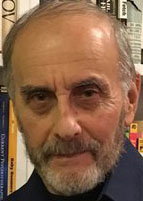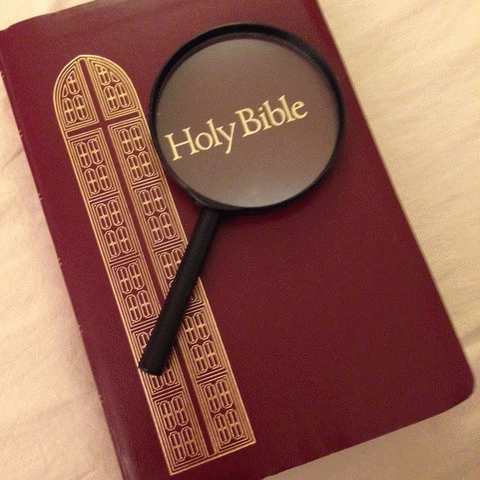It's well known that Christianity sprang from a Jewish context. While there may be controversy about Jesus' Judaism vs. the traditional Judaism of the Sanhedrin, the ruling body of Judaism in the first century, there's no doubt that Jesus, his family, and followers were practicing Jews, as recorded in the New Testament.
Biblical scholar Lawrence H. Schiffman, Judge Abraham Lieberman Professor of Hebrew and Judaic Studies and Director of the Global Network for Advanced Research in Jewish Studies at New York University (NYU), takes this understanding to a new level. He identifies citations in the New Testament that others have glossed over without recognizing their unique significance. On March 26-27, 2015, at a conference at NYU, "Integrating Christianity and Judaism into the Study of the Ancient World," Professor Schiffman delivered a talk titled "The New Testament as a Source for the History of the Jews and Judaism."
I interviewed Professor Schiffman to gain further insight into his perspective on this fascinating subject.
Starr. Professor Schiffman: In Acts of the Apostles 2:5, book 5 of the New Testament, Peter, leader of the apostles after the crucifixion of Jesus, addresses a gathering of Jews from a long list of communities and countries outside of Israel. Acts 11:19 mentions additional communities of Jews in other Greek cities. What is unique about these citations?
Schiffman. We didn't know about some of these Jewish communities. Josephus wrote about places where Jews claimed citizenship based on ancient privilege. Later excavations uncovered synagogues in some of these places. But these are the earliest citations of the existence of Jewish communities so widely dispersed. Also the passages confirm that Jerusalem was an international city in the time of Jesus and the apostles.
Q. You talk about the prevalence of Greek/Roman names many Jews had in addition to their Hebrew names--Like Paul, who was also known by his Hebrew name Saul.
A. And Paul was not alone in that. Acts cites many Jews with Greek names, illustrating that this was not only commonplace but also that a degree of assimilation was commonplace for Jews living in the Greek Diaspora.
Q. There's an ongoing debate about the language of the Jews in the first century. In your presentation you said that the New Testament throws light on that debate.
A. The Jewish community was basically a three language community. Clearly many Jews, especially in the Greek cities, spoke Greek and Hebrew, especially those, like Paul, as revealed in Acts 21:40. In Judaea and surrounding provinces such as Galilee, Aramaic was the primary language of the lower class--surely true for Jesus and his disciples, who were mostly working-class tradesmen. But as is common in international communities, even the working class are often fluent in several languages that they acquire through commerce with different cultures. Jesus probably spoke Aramaic but from citations in the Gospels and Acts we know that he could read Hebrew. He read from the Torah at Sabbath synagogue services (Luke 4:16) .
Q. The Sabbath mandate for rest and renewal in Jewish law and tradition invokes many restrictions on activities---particularly work. Acts 1:12 mentions the allowable distance one can walk on the Sabbath before it is considered a violation. Didn't Jews always know and practice that?
A. Yes and No. Yes we know about that law, but some say that these particular Sabbath laws only came into existence after the destruction of the Second Temple. But here we have verification that the laws existed in Jesus' time in the first century--- and that the disciples were scrupulously following Jewish law. In Acts 1:12 they were able to walk to the Mount of Olives (Olivet) on the Sabbath because it was in the allowable distance --"A Sabbath day's Journey away" of 3000 feet (2000 cubits). In fact, archaeological excavations have uncovered stones in some locations for marking the Sabbath limits. .
Q. What about celebrating the Jewish holidays?
A. We know that the Torah called for Jews to celebrate three holidays at the Temple in Jerusalem: Pesach (Passover), Shavuot (the Feast of Weeks), and Sukkot (the Festival of Booths). The New Testament verifies that this mandate was actually followed. Luke 2:41 reports that Mary and Joseph traveled every year to the Temple in Jerusalem for Passover. Then Acts 2:1 and 20:6 say that Jesus' disciples and Paul also celebrated the prescribed holidays.
Q. In the Torah the age of prophesy ends with the Prophet Malachi in about 420 BCE. Yet you point to a citation in the New Testament that calls David a prophet, although he is not listed among the prophets.
A. Rabbinic Judaism says that David was an author not a prophet. But Peter's words in Acts 2:29-30 inform us that in Second Temple Judaism some Jews considered David a prophet ("Fellow Israelites, I may say to you confidently of our ancestor David that he both died and was buried, and his tomb is with us to this day. Since he was a prophet, he knew that God had sworn with an oath to him that he would put one of his descendants on his throne."). Prophesy is also cited in a minor way in Acts 21:8-10 ("We went into the house of Philip the evangelist. He had four unmarried daughters who had the gift of prophecy. While we were staying there for several days, a prophet named Agabus came down from Judea.")
Q. You were struck by a citation about the time of prayer.
(Note: You can view every article as one long page if you sign up as an Advocate Member, or higher).






